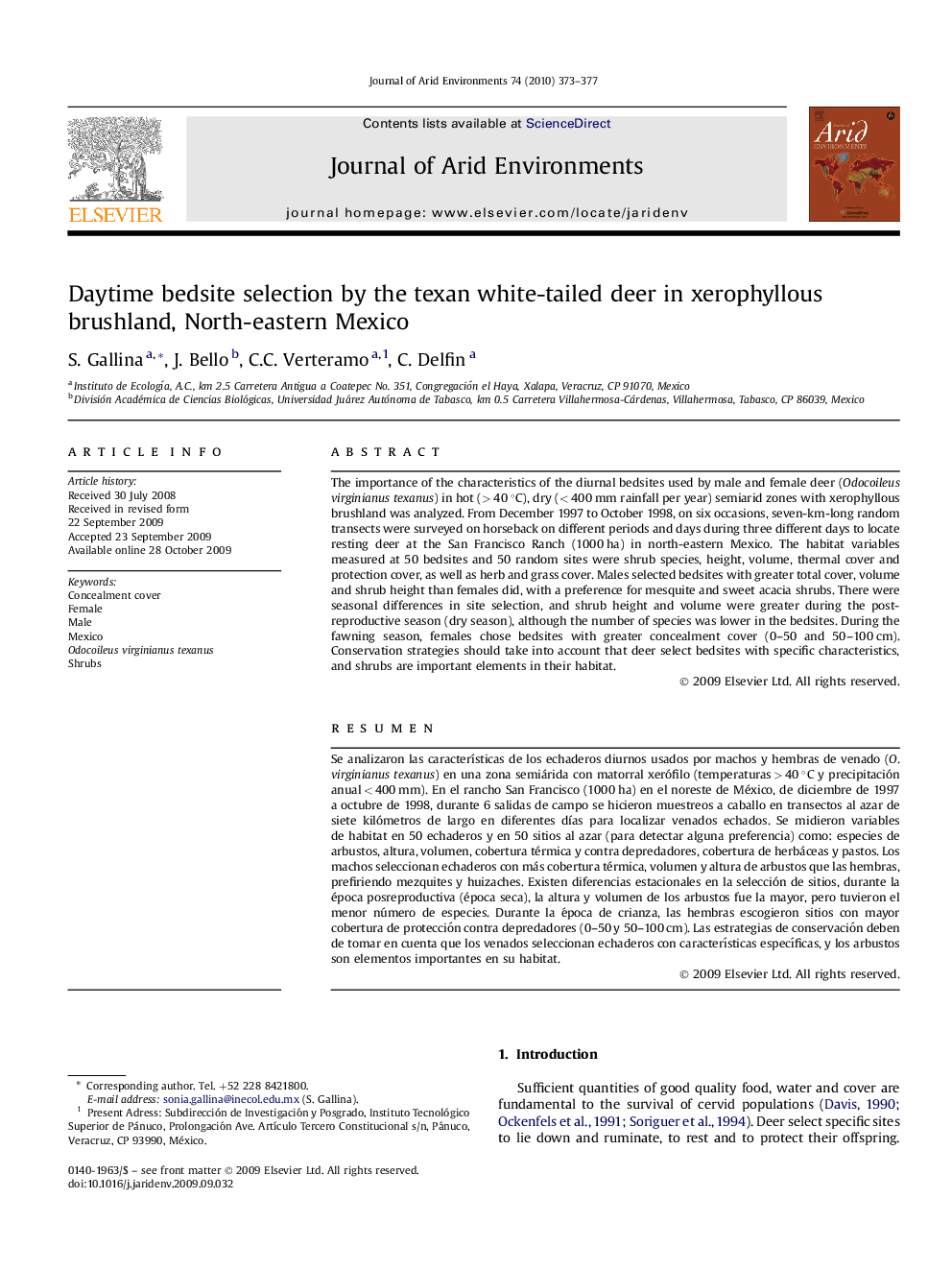| کد مقاله | کد نشریه | سال انتشار | مقاله انگلیسی | نسخه تمام متن |
|---|---|---|---|---|
| 4393822 | 1305505 | 2010 | 5 صفحه PDF | دانلود رایگان |

The importance of the characteristics of the diurnal bedsites used by male and female deer (Odocoileus virginianus texanus) in hot (> 40 °C), dry (< 400 mm rainfall per year) semiarid zones with xerophyllous brushland was analyzed. From December 1997 to October 1998, on six occasions, seven-km-long random transects were surveyed on horseback on different periods and days during three different days to locate resting deer at the San Francisco Ranch (1000 ha) in north-eastern Mexico. The habitat variables measured at 50 bedsites and 50 random sites were shrub species, height, volume, thermal cover and protection cover, as well as herb and grass cover. Males selected bedsites with greater total cover, volume and shrub height than females did, with a preference for mesquite and sweet acacia shrubs. There were seasonal differences in site selection, and shrub height and volume were greater during the postreproductive season (dry season), although the number of species was lower in the bedsites. During the fawning season, females chose bedsites with greater concealment cover (0–50 and 50–100 cm). Conservation strategies should take into account that deer select bedsites with specific characteristics, and shrubs are important elements in their habitat.
ResumenSe analizaron las características de los echaderos diurnos usados por machos y hembras de venado (O. virginianus texanus) en una zona semiárida con matorral xerófilo (temperaturas > 40 °C y precipitación anual < 400 mm). En el rancho San Francisco (1000 ha) en el noreste de México, de diciembre de 1997 a octubre de 1998, durante 6 salidas de campo se hicieron muestreos a caballo en transectos al azar de siete kilómetros de largo en diferentes días para localizar venados echados. Se midieron variables de habitat en 50 echaderos y en 50 sitios al azar (para detectar alguna preferencia) como: especies de arbustos, altura, volumen, cobertura térmica y contra depredadores, cobertura de herbáceas y pastos. Los machos seleccionan echaderos con más cobertura térmica, volumen y altura de arbustos que las hembras, prefiriendo mezquites y huizaches. Existen diferencias estacionales en la selección de sitios, durante la época posreproductiva (época seca), la altura y volumen de los arbustos fue la mayor, pero tuvieron el menor número de especies. Durante la época de crianza, las hembras escogieron sitios con mayor cobertura de protección contra depredadores (0–50 y 50–100 cm). Las estrategias de conservación deben de tomar en cuenta que los venados seleccionan echaderos con características específicas, y los arbustos son elementos importantes en su habitat.
Journal: Journal of Arid Environments - Volume 74, Issue 3, March 2010, Pages 373–377